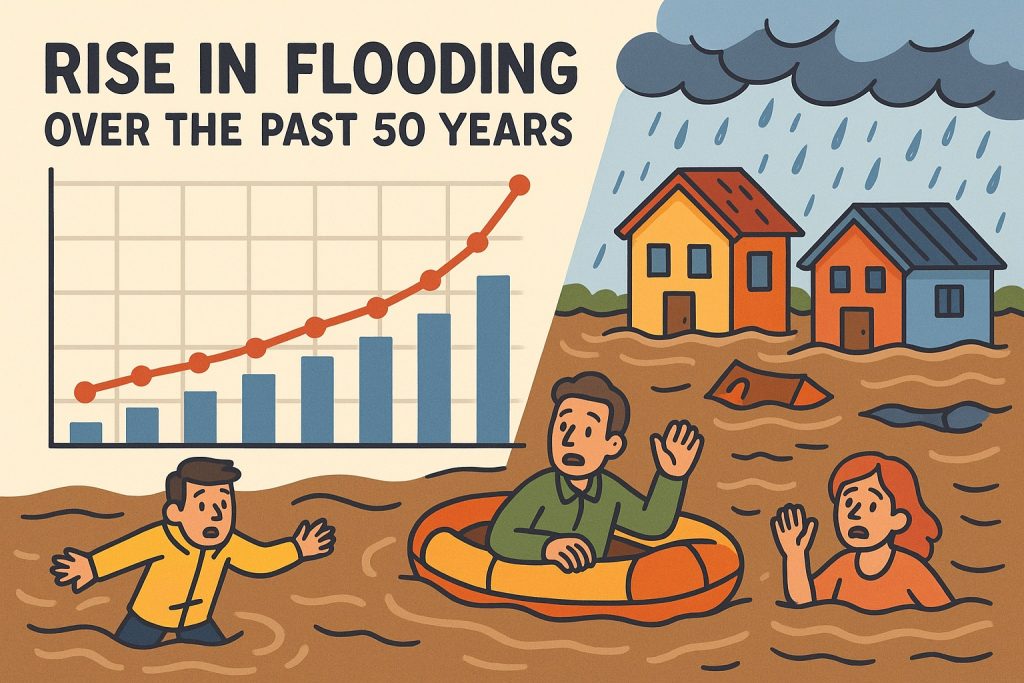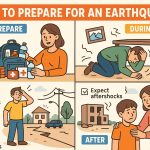Over the past five decades, the frequency and intensity of floods have increased significantly across the globe. Once considered seasonal or regional events, floods are now occurring in unexpected places, often with devastating consequences. This trend is driven by a complex mix of climate, environmental, and human factors, making it a major concern for urban planners, governments, and the general public.
Global Increase in Flood Frequency
Flood-related disasters have more than doubled since the 1970s, according to international data. Countries in South Asia, Africa, Europe, and the Americas have experienced a sharp rise in both riverine and urban flooding. In particular:
- Urban areas have seen more frequent flash floods due to poor drainage systems and expanding impermeable surfaces.
- Coastal floods are growing in intensity because of sea level rise and stronger storms.
- Inland rivers are overflowing more often due to excessive rainfall and snowmelt caused by shifting climate patterns.
The number of floods reported each year has steadily risen, with record-setting events in Pakistan (2022), Germany (2021), and China (2020) marking just a few of the recent examples.
Causes of the Flooding Surge
Several key factors contribute to the increasing frequency and severity of floods:
- Climate change is leading to more intense and unpredictable rainfall events, especially in tropical and temperate zones.
- Urbanization replaces natural land with concrete, preventing water from being absorbed into the ground.
- Deforestation reduces the landscape’s ability to absorb water, increasing runoff into rivers and lakes.
- Melting glaciers and snowpacks in mountainous regions are accelerating seasonal river floods.
- Dam mismanagement and outdated infrastructure can also amplify flood risks in vulnerable areas.
The interaction of these factors often leads to catastrophic results when warning systems and emergency planning are lacking.
Consequences of Increased Flooding
The human and environmental impacts of flooding have grown along with the frequency:
- Loss of life: Hundreds of thousands have died in flood events since the 1970s.
- Displacement: Millions are displaced annually due to flood-related destruction.
- Economic damage: Infrastructure, agriculture, and homes suffer billions in losses yearly.
- Waterborne diseases: Standing water promotes outbreaks of cholera, hepatitis, and other infections.
- Ecosystem disruption: Floods can destroy habitats and alter river ecosystems for decades.
In developing regions, the damage is compounded by a lack of resources, while in developed nations, economic loss tends to be higher due to more built infrastructure.
A Call for Adaptation and Resilience
As floods continue to increase, communities must adapt through smarter planning and sustainable practices:
- Early-warning systems and flood mapping improve emergency response.
- Green infrastructure such as rain gardens, wetlands, and permeable pavements help absorb excess water.
- Reforestation and river restoration strengthen natural flood defenses.
- Climate policy and carbon reduction are essential to address the root causes of extreme weather.
The rise in flooding is not just a natural phenomenon—it’s a signal that our interaction with the environment must evolve.
Glossary
- Flash flood — A sudden, intense flood typically caused by heavy rain in a short time.
- Sea level rise — The increase in ocean levels due to melting glaciers and thermal expansion.
- Urbanization — The growth of cities, often leading to increased concrete and less natural drainage.
- Runoff — Rainwater that flows over land rather than soaking into the ground.
- Green infrastructure — Natural or semi-natural systems that help manage water and provide resilience to climate change.


